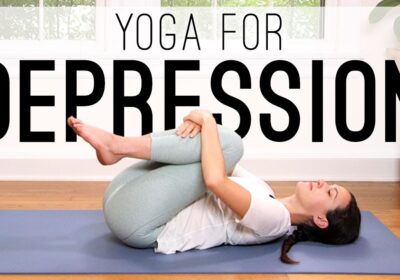Yoga for T2DM

Summary:
- Yoga can be used as both an add-on treatment and as a monotherapy for patients with type 2 diabetes mellitus. Its use as a monotherapy is largely restricted to initial days of ailment.
- Yoga not only helps in controlling the blood sugar levels among patients with type 2 diabetes mellitus, but also delays the progression of ailment and prevents complications.
- All yoga practices are not safe for patients with type 2 diabetes mellitus, and this risk is largely associated with patients who present with different complications (especially diabetic neuropathy, diabetic nephropathy and diabetic retinopathy) of the disease.
Yoga is a holistic lifestyle, proposed in the ancient Indian texts, that involves physical postures, breathing techniques, personal and social discipline, dietary recommendations and meditation techniques. It has been shown to have a number of health benefits, including improving cardiovascular health, reducing stress, and increasing flexibility and strength. For individuals with diabetes mellitus, yoga can be a particularly effective form of exercise, as it can help to improve blood sugar control and reduce the risk of complications associated with the condition. Research has shown that regular yoga practice can lead to significant reductions in fasting blood sugar levels, hemoglobin A1c (a measure of long-term blood sugar control), and body weight in people with type 2 diabetes. Additionally, yoga can improve cardiovascular fitness and reduce the risk of cardiovascular disease in people with diabetes.
Following yoga practices can be useful for patients with type 2 diabetes mellitus:
- Surya Namaskar (Sun Salutation): This series of yoga postures, being very similar to exercise, helps to increase circulation and improve insulin sensitivity in the body.
- Asana practices: Ardha matsyendrasana, paschimottanasana, dhanurasana, vakrasana, hamsasana, mayurasana are considered to be some specific postures for patients with type 2 diabetes mellitus. Besides padmasana (Lotus Pose), vrikshasana are the postures which can be particularly useful for the health of lower limbs which are affected due to diabetic neuropathy.
- Pranayama: Most beneficial pranayama practices for patients with diabetes mellitus are bhastrika and kapalbhati pranayama. Besides, balancing pranayama (anuloma viloma pranayama) is also considered good.
- Kriyas: Agnisara kriya, vamana dhauti and laghu shankha prakshalana are possibly the best kriyas for patients with diabetes mellitus.
- Relaxation: Savasana (Corpse Pose), yoga nidra and other similar relaxation and meditation practices help to reduce stress and anxiety, which can help to regulate blood sugar levels in the body.
- Yogic diet: Emphasis on the idea of sattvic diet and mitahara can have a potential role in the management of blood sugar levels among patients with type 2 diabetes mellitus.
Yoga practices, such as asanas (yoga postures), pranayama (breathing techniques), and meditation, are believed to have a positive impact on diabetes mellitus by affecting various physiological mechanisms. These possible mechanisms include:
- Improved insulin sensitivity: Yoga practices can improve insulin sensitivity by increasing the number of insulin receptors in the body. This helps the body to better utilize insulin and reduce the amount of insulin required to control blood sugar levels.
- Increased beta-cell function: Yoga practices have been shown to increase the number and function of beta cells, which are responsible for producing insulin in the pancreas. This can help to improve blood sugar control and reduce the need for insulin therapy.
- Improving glucose metabolism: Yoga practices such as pranayama (breathing techniques) and asanas (yoga postures) have been found to improve glucose metabolism by increasing insulin sensitivity and reducing blood glucose levels.
- Reduced stress: Yoga practices, such as meditation and pranayama, can help to reduce stress and anxiety, which can have a positive impact on diabetes. Stress can cause the release of hormones that can increase blood sugar levels and make it harder to control diabetes.
- Improved cardiovascular health: Yoga practices have been found to improve cardiovascular health by reducing blood pressure and improving heart rate variability. This can help to reduce the risk of complications associated with diabetes, such as heart disease and stroke.
- Improving body composition: Yoga practices have been found to improve body composition by reducing body fat and increasing muscle mass, which can be beneficial for people with diabetes who are at risk for obesity and related complications.
There is a possibility of adverse effects associated with yoga practices. Some of the common adverse effects are highlighted below:
- Risk of injury: Yoga poses, especially those that involve twisting or bending, can put a lot of stress on the joints and muscles. This can lead to injuries, especially in people with diabetes who may have decreased sensation in their feet or poor circulation.
- Hypoglycemia: Yoga can lower blood sugar levels, which can be dangerous for people with diabetes who are taking insulin or other medications that lower blood sugar. It is important to monitor blood sugar levels closely and to adjust medication doses as needed.
- Worsening of complications of diabetes mellitus: Yoga poses that involve putting weight on the hands and feet can be uncomfortable or even painful for people with diabetic neuropathy. Similarly, for patients with other complications of diabetes mellitus, it is mandatory to take guidance from a clinician or yoga therapist.
Yoga, despite being useful for patients with diabetes mellitus, has certain limitations in it application:
- Difficulty with certain poses: Some yoga poses may be too difficult for people with diabetes due to decreased flexibility, balance issues, or other complications.
- Time constraints: Yoga classes may not fit into the schedule of someone with diabetes who also needs to manage blood sugar levels, take medications, and see a healthcare provider regularly.
- Financial constraints: Yoga classes can be expensive and may not be covered by insurance.
- Limited access to qualified instructors: Some areas may not have certified yoga instructors who are trained to work with patients with diabetes.
- Limited research: There is limited research on the specific effects of yoga on diabetes management. More studies are needed to fully understand the potential benefits and limitations of yoga for people with diabetes.
In conclusion, yoga can be a valuable complementary therapy for individuals with diabetes mellitus. It can help to improve overall health and well-being, as well as managing symptoms associated with diabetes such as stress, anxiety, and blood sugar control. Yoga can also assist in weight management, which can be beneficial for individuals with type 2 diabetes. However, it is important to consult with a healthcare professional before starting a yoga practice, as certain poses may not be suitable for individuals with certain health conditions. Additionally, it is important to continue monitoring blood sugar levels, and making any necessary adjustments to medication or diet in consultation with a healthcare professional.
Related Posts

Yoga for Anxiety Disorders
Summary: Yoga can be used as both an add-on treatment and as a monotherapy for…

Yoga for Back pain
Summary: Yoga can be used as both an add-on treatment and as a monotherapy for…

Yoga for Depression
Summary: Yoga can be used as both an add-on treatment and as a monotherapy for…

Leave a Reply